Pros and cons
Decorating a kitchen without top cabinets is controversial. Some find this solution modern, while others prefer classic headsets. Single-tier kitchens have their own advantages and disadvantages that should be considered.
| pros | Minuses |
|---|---|
|
|
Examples for different layouts
There is no gold standard for planning a kitchen without upper cabinets; it can be implemented both in long and narrow rooms and in spacious studios. The form of furniture arrangement should be chosen based on the parameters of the kitchen.
In the photo there is a kitchen with an island without upper cabinets.
- The corner set will fit into almost any kitchen, with its help it is easy to organize a working triangle "stove-sink-refrigerator".
- Linear placement is ideal for narrow kitchens, single-level sections can be placed on one side or along two opposite sides. The absence of upper cabinets will help make the kitchen visually wider.
- Thanks to the u-shaped arrangement, the issue of storing numerous utensils is solved, but it can only be realized in an initially large space.
In the photo there is a kitchen with elements of Provence.
What about an apron?
The lack of top cabinets opens up an unexpected problem to be solved: the apron. In kitchens with top drawers, it occupies the space between the modules and the walls in the work area remain protected. New circumstances require fresh solutions, because the risk of ruining the wall covering is quite high. When choosing an apron, not only functionality is important, but also design - it can transform the interior of the kitchen.
One of the possible solutions is an apron for a kitchen without upper cabinets in the entire wall. It is made of ceramic tiles, mosaics, or the area is painted with durable washable paint. This coating does not need special care and is easy to clean. Caring for artificial stone, masonry or concrete requires knowledge and skill, but protecting work areas with glass will make the task easier.
The photo shows an example of a kitchen set with an island and built-in appliances.
Pictured on the right is a kitchen with a modern marble backsplash in the work area.
The apron can be designed and not over the entire width or length. If necessary, its height is reduced to a meter - this is enough to protect the walls from splashes. Another option is to leave it up to the ceiling, but limit the width to the working areas - stove and sink.
The upper border of the apron is of two types: straight and clear, or blurred.This effect is achieved using tiles in the form of bricks, honeycombs or other non-standard shapes.
The photo shows a white kitchen in a Scandinavian style with an original apron.
What to do with the cooker hood?
In classic kitchens, the hood is hidden in one of the upper sections. But getting rid of them does not mean abandoning additional ventilation.
There are several options for installing a hood in a kitchen without upper cabinets:
- Wall. A wide range of designs and colors will make it easy to find the right model. The hood can serve as an additional shelf or for decorative purposes.
- Ceiling. The solution for those who prefer to hide functional devices. This type of hood is also used as a light source.
- Hidden. On the market there are models of hobs and hobs with built-in hoods, as well as individual hoods built into the worktop.
In the photo, a hood disguised with white panels.
When installing any of the listed models, take care of the duct. The pipe is masked with a box, hidden in a wall or ceiling.
Unlike flow-through, recirculating hoods do not require air extraction. They contain special filters that purify the air and release it back into the kitchen. The advantage of this type is not only in the absence of pipes, but also in mobility - if necessary, it can be placed even in a room without ventilation.
The photo shows a dark kitchen with a laconic hood.
Where to put the dish drainer?
Traditionally, a dish drainer is placed in an overhead cabinet, but other placement options are just as practical.
You can preserve the usual storage of plates in the cabinet by placing the dish drier in the lower drawer. Thus, the dishes will be hidden from dust and prying eyes, but you will have to constantly bend over behind it.
A tabletop or hanging dryer will help facilitate the use of cutlery. Wall-mounted does not take up much space, but the dishes will be visible and can become dusty. The tabletop design, although it takes up part of the usable space, allows you to move it from place to place.
Pictured on the right is a dish dryer in the bottom drawer.
How to correctly distribute equipment?
A freestanding refrigerator breaks the minimalism of a kitchen without overhead wall cabinets. There are two ways to get out of this situation: buy a built-in and order a pencil case for it, or make a frame with shelves around a regular refrigerator. If there is no need for a large volume, replace the refrigerator with a compact one and place it under the countertop.
Pictured is a refrigerator with additional storage cabinets.
The built-in oven is placed either in the lower module or at hand level - this makes it easy to use. In the second case, there is a place above the oven for the built-in microwave oven. This will save usable space on the work surface.
In the photo on the right there is an option for placing built-in appliances.
Features of the organization of lighting
The issue of lighting a kitchen without upper cabinets is solved at the planning stage, because electrical work must be carried out before redecorating. Spot lighting in the work area will make your daily tasks easier. It can be realized using LED lighting (if the cabinets are replaced with shelves), wall or ceiling adjustable lights.
In the photo on the left, a kitchen design without upper cabinets with a wood-like countertop.
Improperly installed hanging chandeliers or omnidirectional lamps can create a number of problems. For example, to blind or interfere during work - low-lying ones can be hit with their heads. In addition, they do not cope with the main task of spot illumination of a tabletop.
In the photo on the right, black wall lamps with directional light.
How to replace wall cabinets?
Bottom cabinets alone are often not enough to store all your kitchen utensils, especially in a small apartment. This can be solved by open shelves, additional shelving or a railing system.
Open shelves are suitable for a Scandi-style kitchen, Provence, loft, high-tech, country. Among the advantages are decorative appearance, ease of use, and also safety - there are no doors that can cause head injuries. The disadvantages include the deposition of dust and grease on the surface and the need for their frequent cleaning.
The upper cupboard will help to keep it clean, which will not affect the overall appearance of the kitchen and will serve as a protection against contamination.
The photo shows an example of kitchen decoration in a country house.
Additional shelving requires space and is suitable for a spacious home. This idea is realized with the help of sideboards or sideboards, which can be left in the kitchen, or taken out into the dining room or corridor.
The railing system is not suitable for large-scale storage, but it can provide storage of utensils for cooking and serving, bulk products and other essentials.
In the photo on the right there are shelves on pipes in the loft style.
Recommendations for small kitchens
In the absence of upper cabinets, a small kitchen will look more spacious. However, the volume of the lower cabinets may not be sufficient to store the necessary storage.
The L-shaped layout has more capacity compared to the linear layout and helps to use the space more efficiently. The absence of the need for hanging cabinets also allows you to use the windows by placing the countertop underneath them. Additional storage space can be created using open shelves or mezzanines.
In the photo there is a kitchen without upper cabinets with shelves and an original apron.
In the photo on the right, there is a small kitchen without wall cabinets in the Scandinavian style.
You can save space by getting 2-3 additional cabinets by replacing the dining table with a bar counter - you can both eat and cook on the countertop. And store everything you need below.
Wall Design Ideas Without Top Cabinets
An empty wall in a kitchen without upper cabinets will somehow attract the eye, so you need to decide - to focus on this area or to “calm” it?
Color can be achieved with color or materials. For example, a brick or chalk wall will decorate the interior. A bright apron made of unusual tiles, original wallpaper or painting in variegated shades will also be great accents.
In the photo there is a kitchen without hanging drawers with a brick wall.
An alternative to brightness is calm tones and a standard design, objects on the shelves will attract attention.
Photo gallery
Stylish kitchens without upper cabinets appeal to many, but to make the room not only beautiful, but also comfortable, plan everything in advance. Before starting the renovation, decide on lighting, furniture placement, storage space and decor.

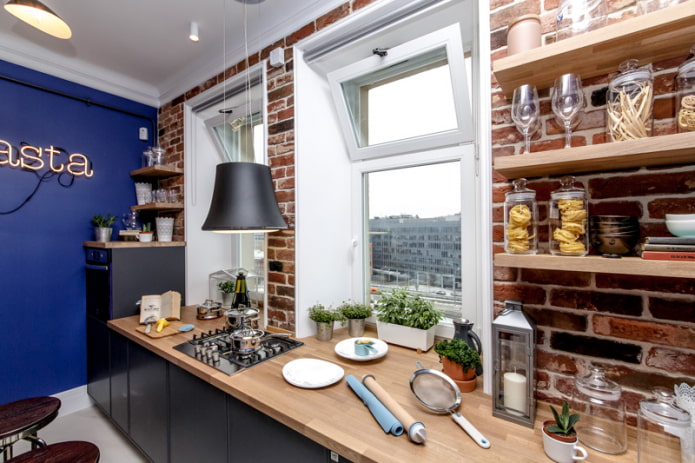
 10 practical tips for arranging a small kitchen in the country
10 practical tips for arranging a small kitchen in the country
 12 simple ideas for a small garden that will make it visually spacious
12 simple ideas for a small garden that will make it visually spacious
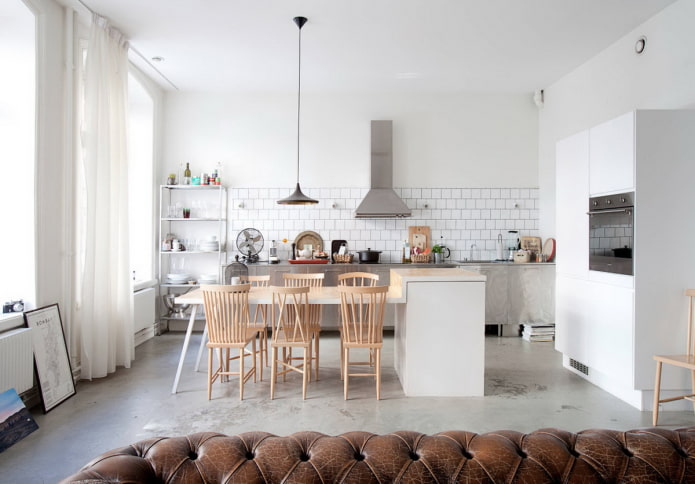
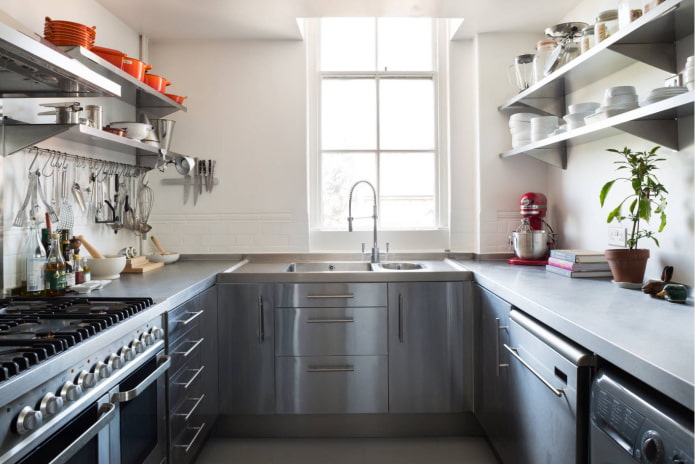
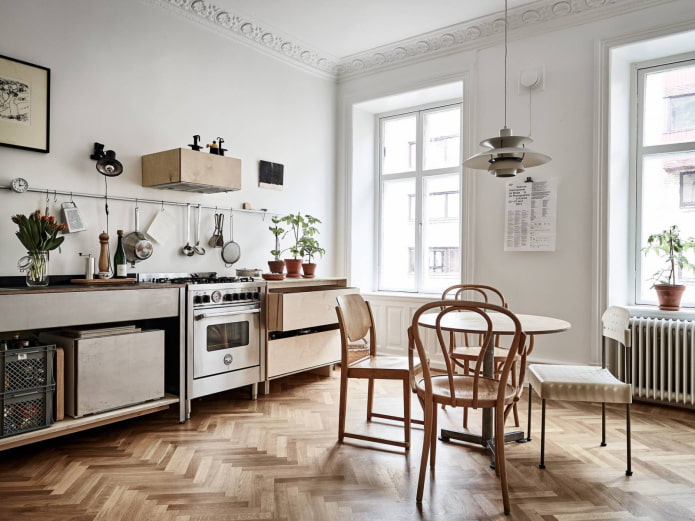
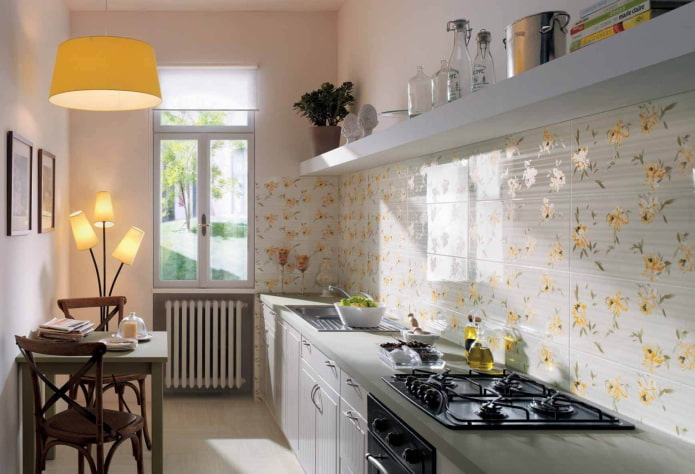
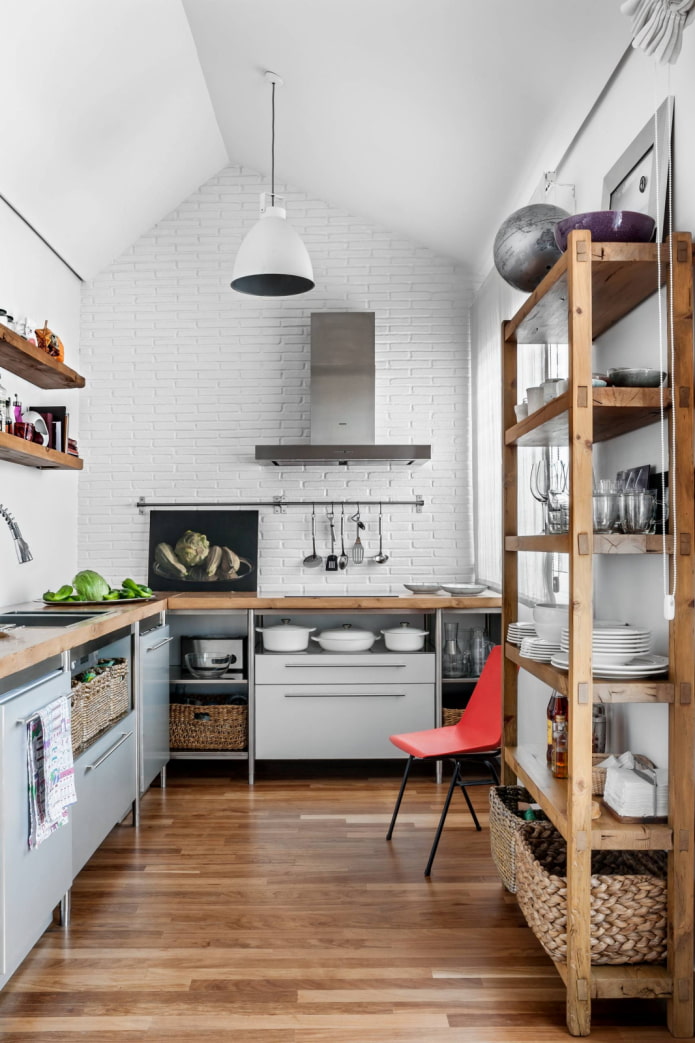
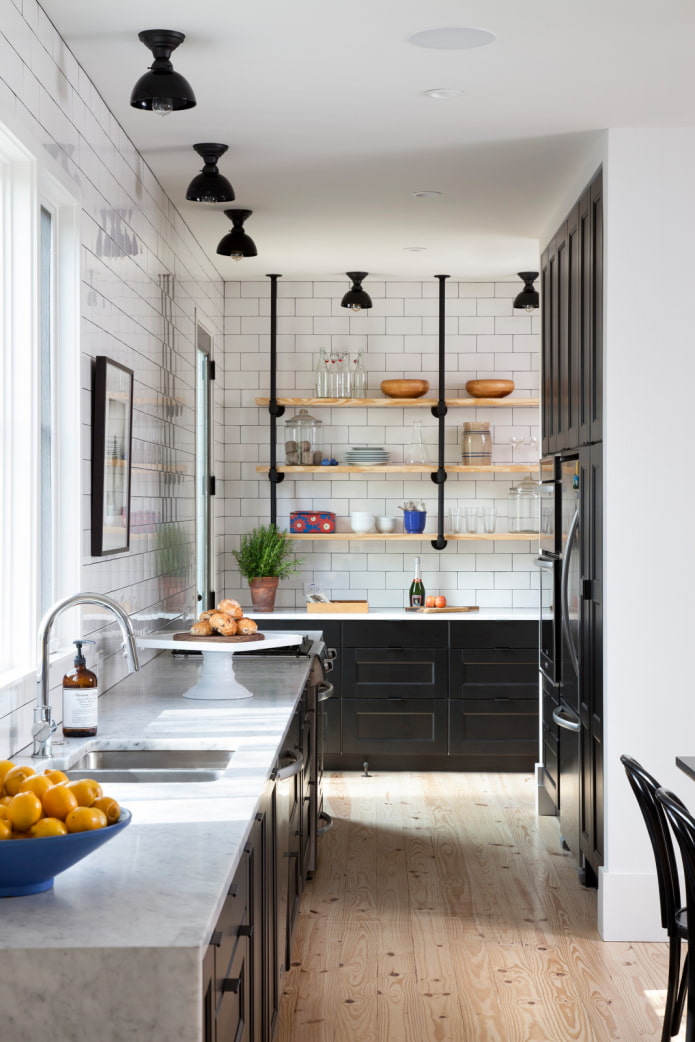
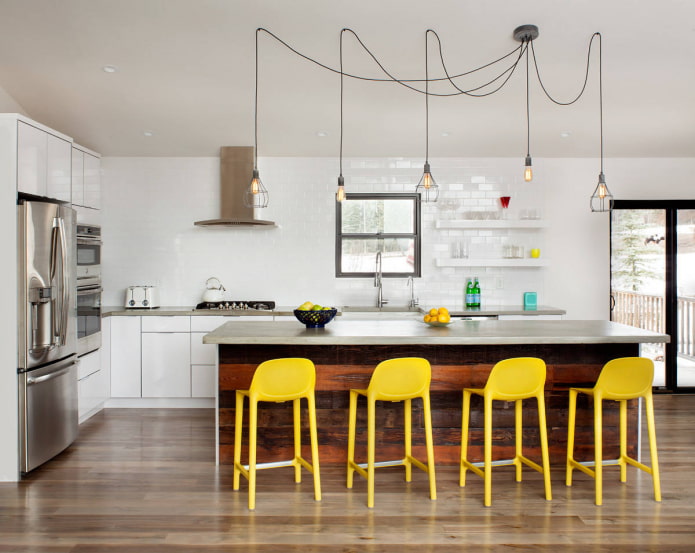
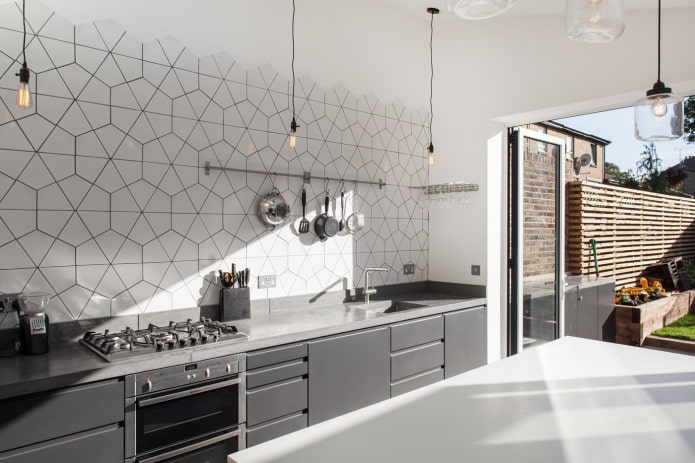
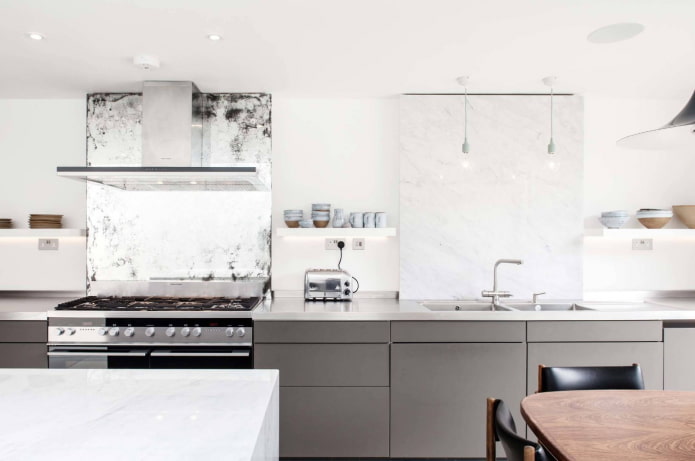
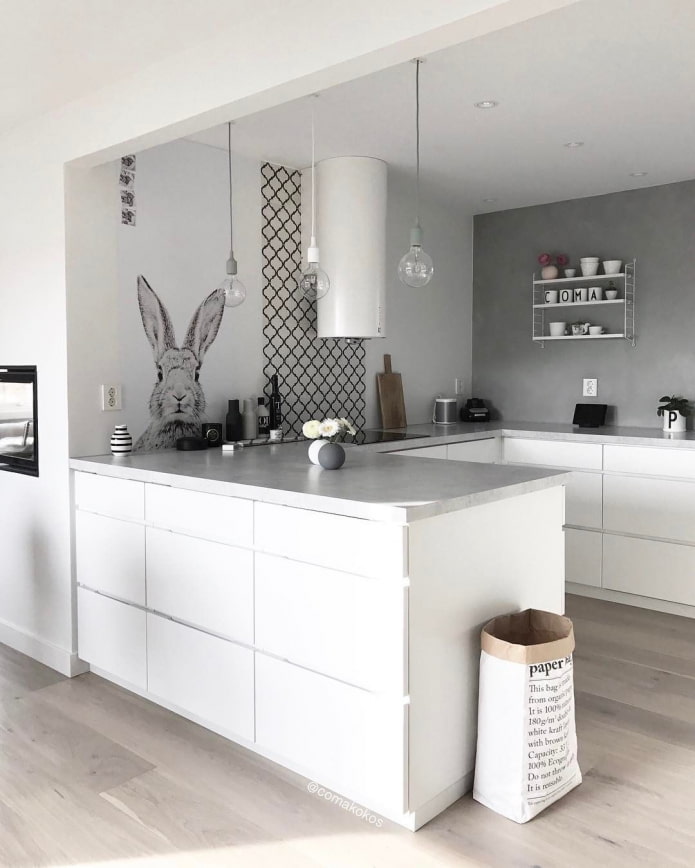
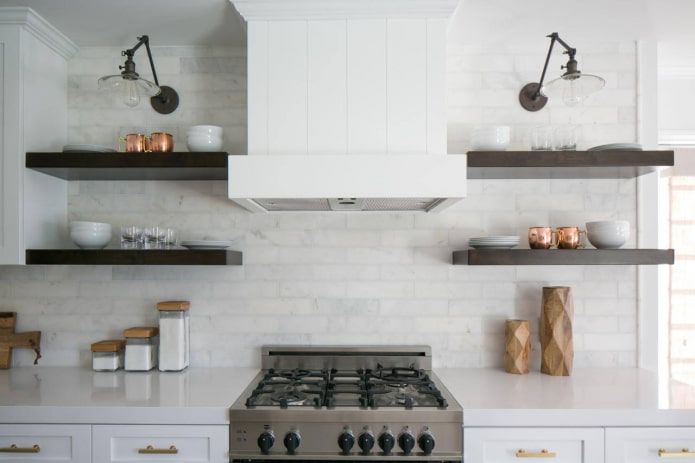
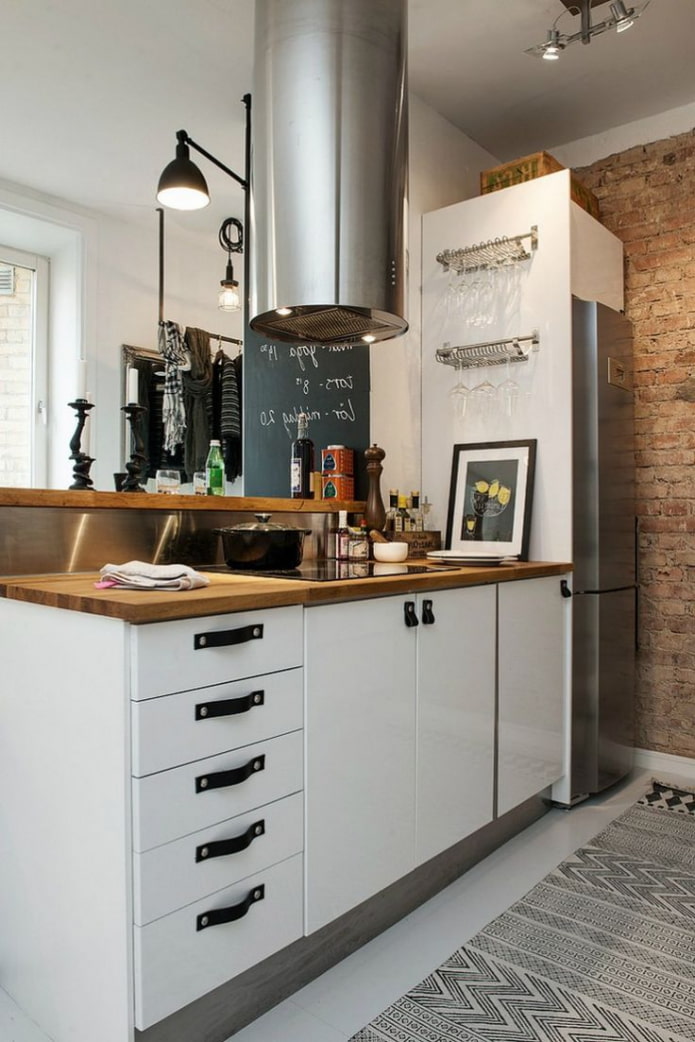
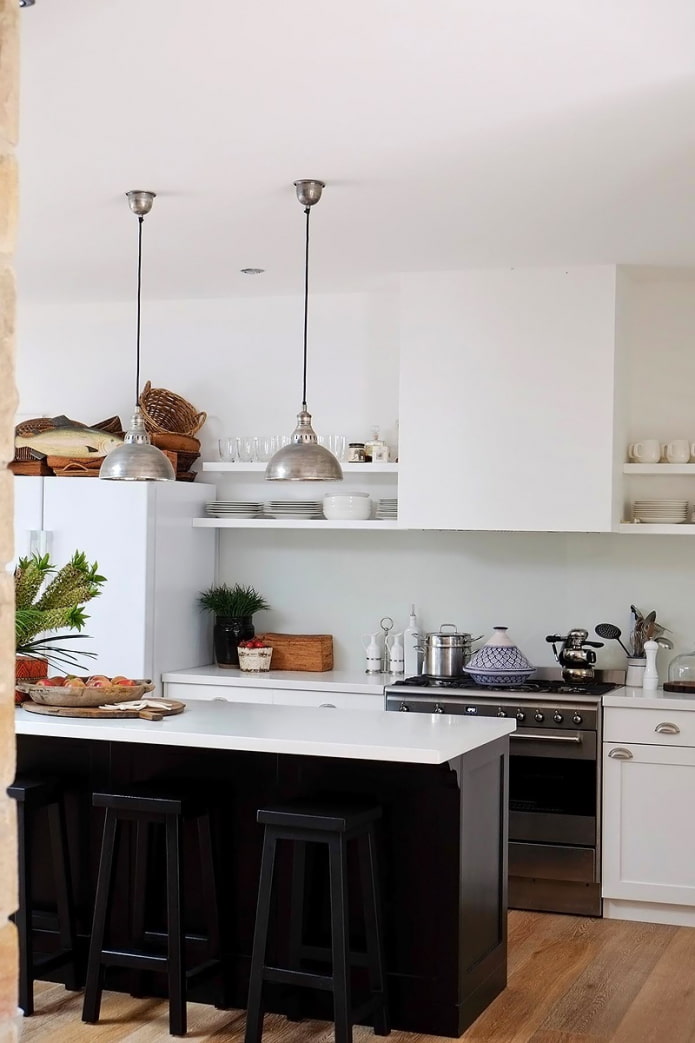

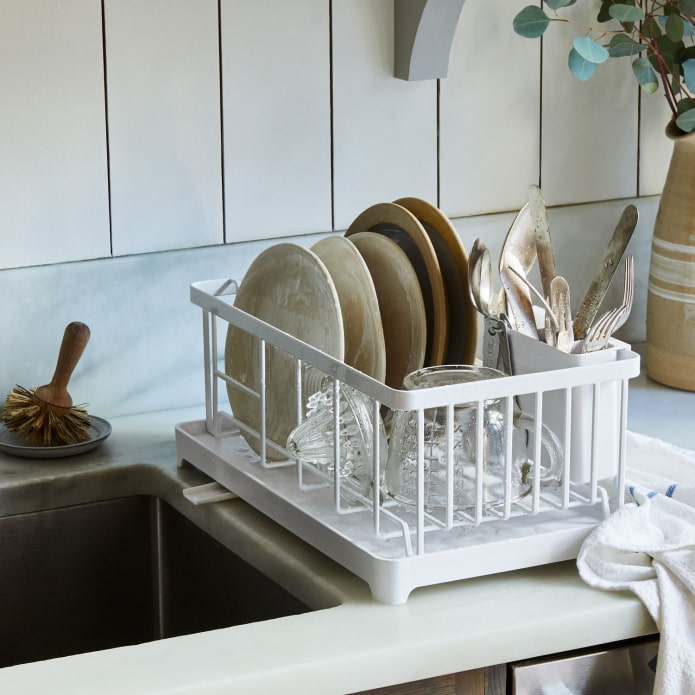
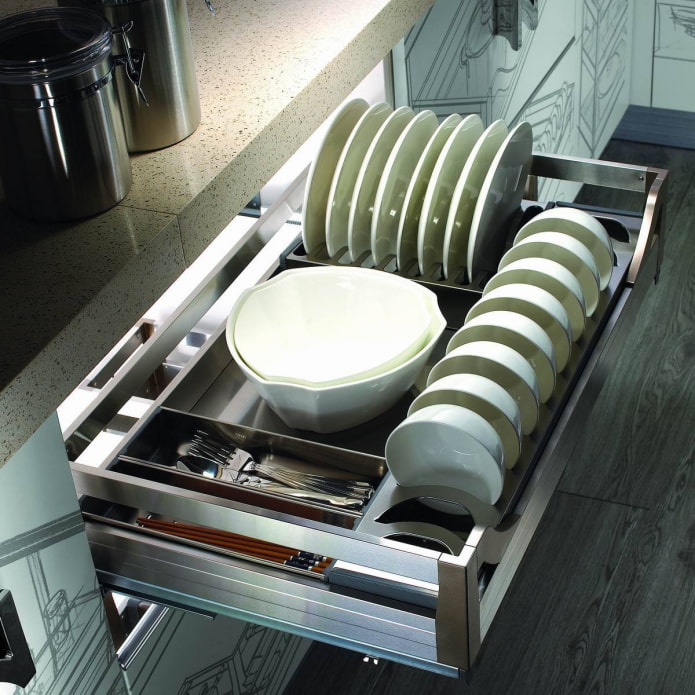
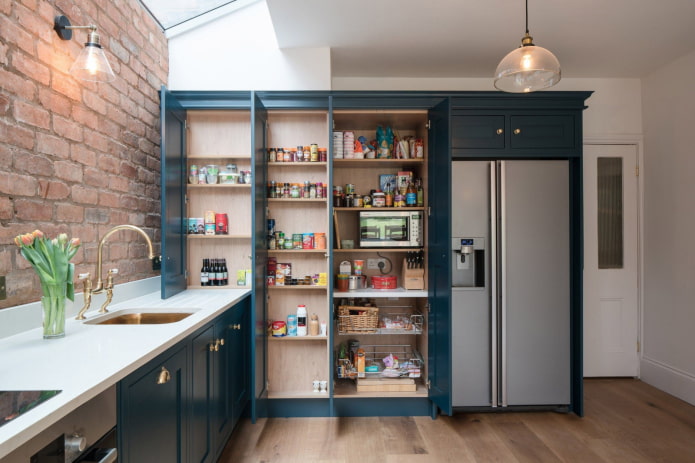
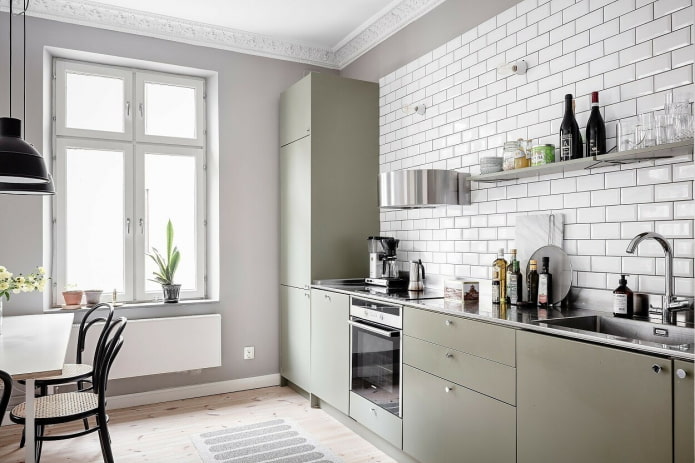
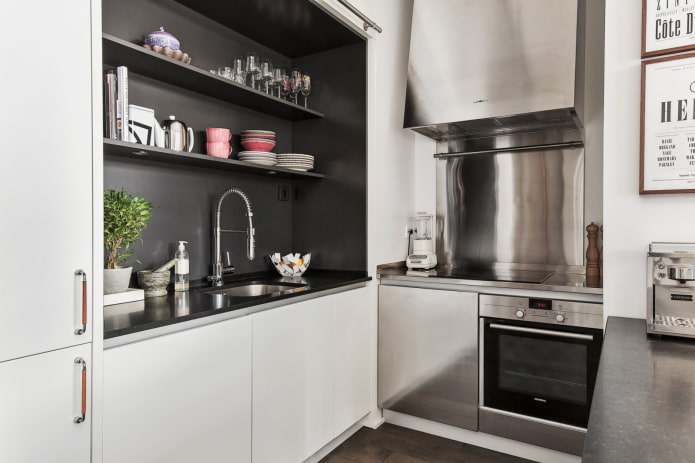
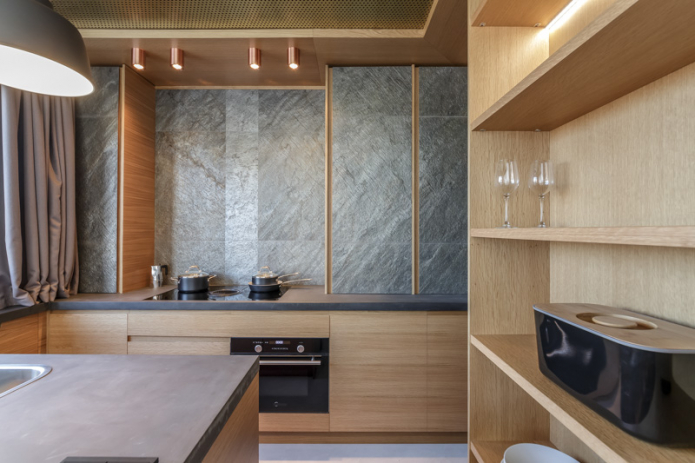
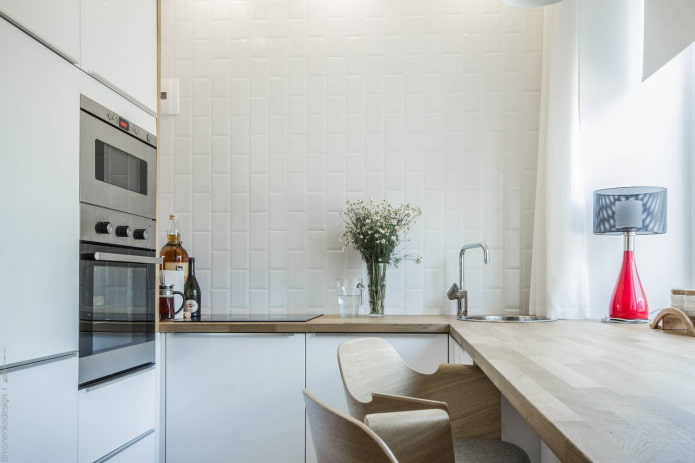

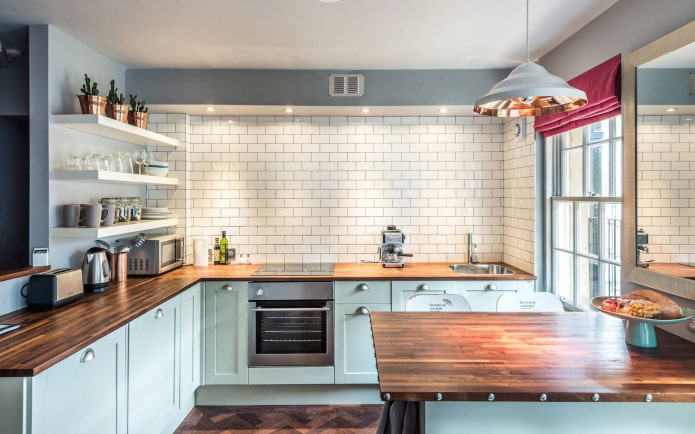
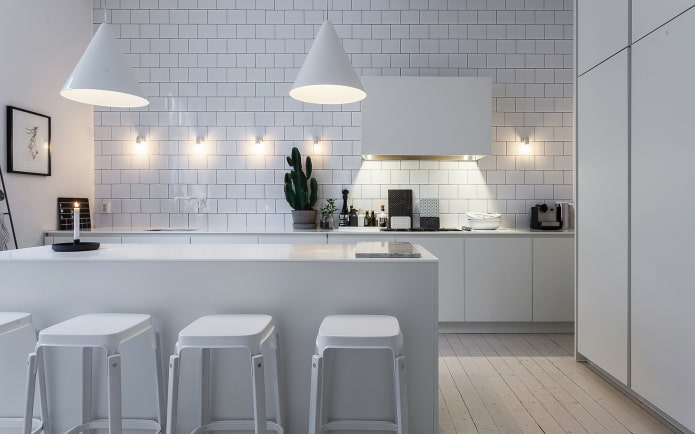
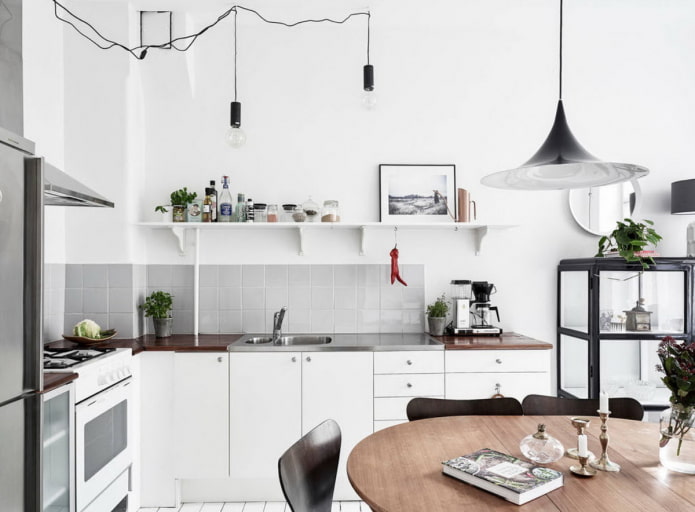

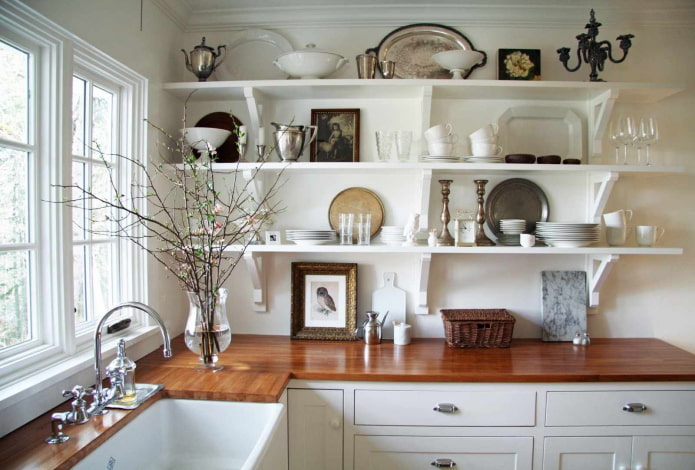
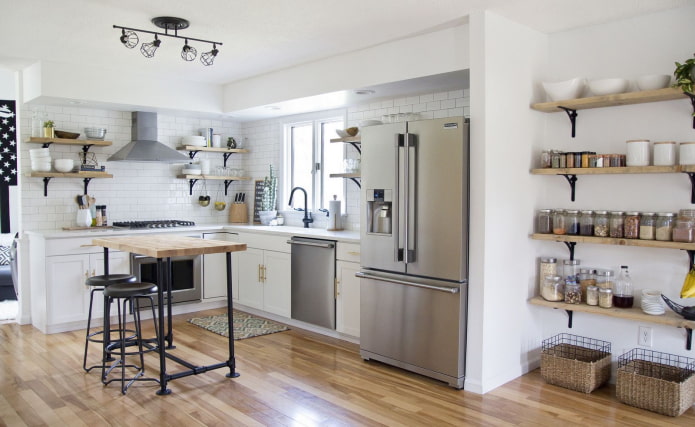
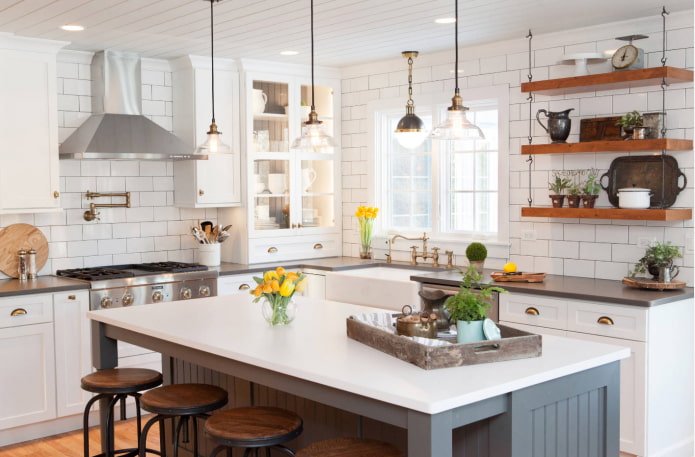
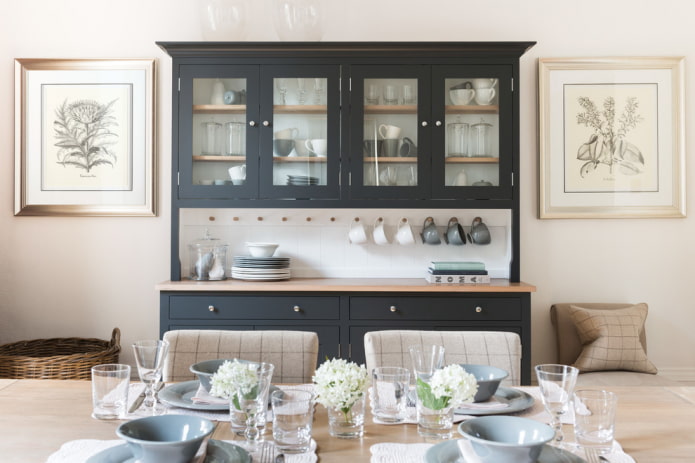
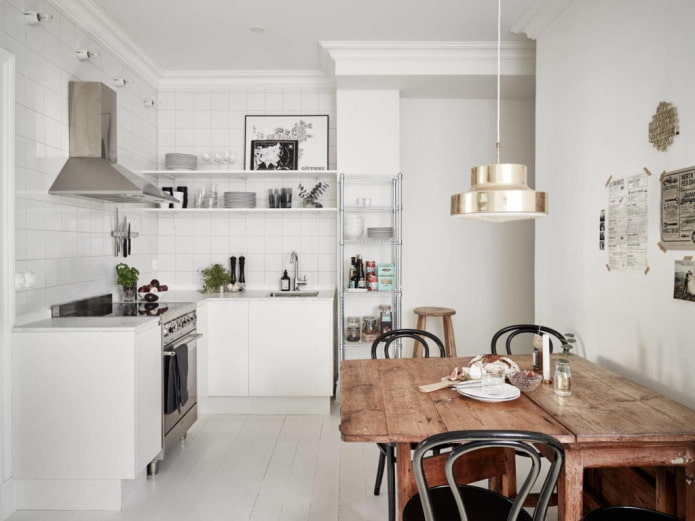

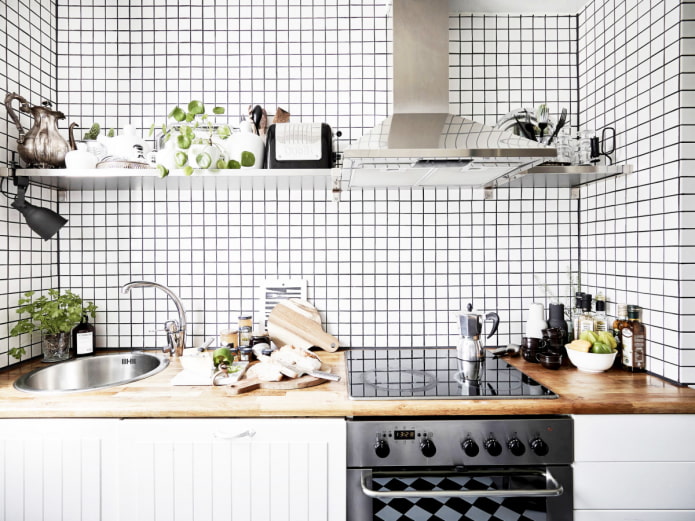
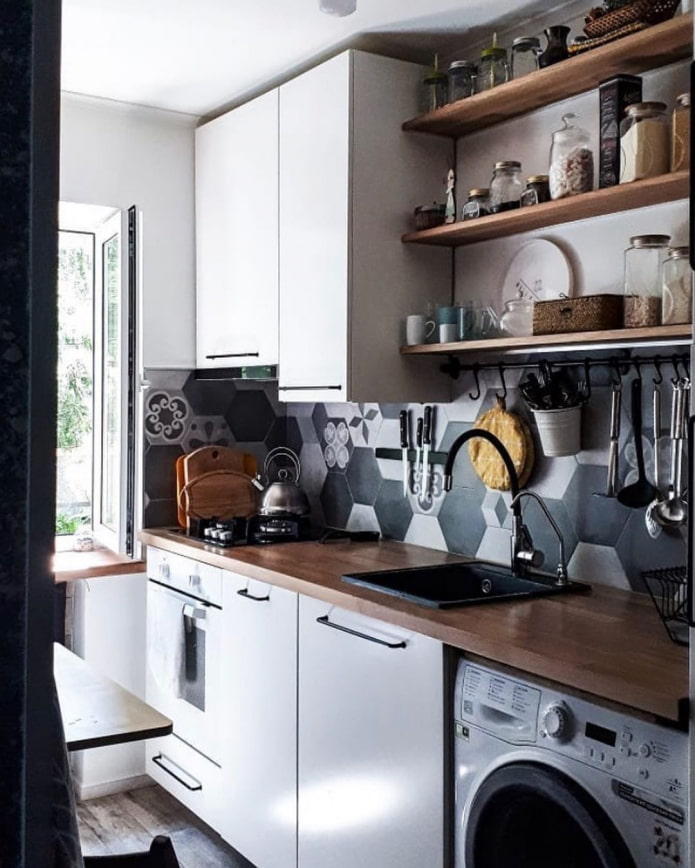
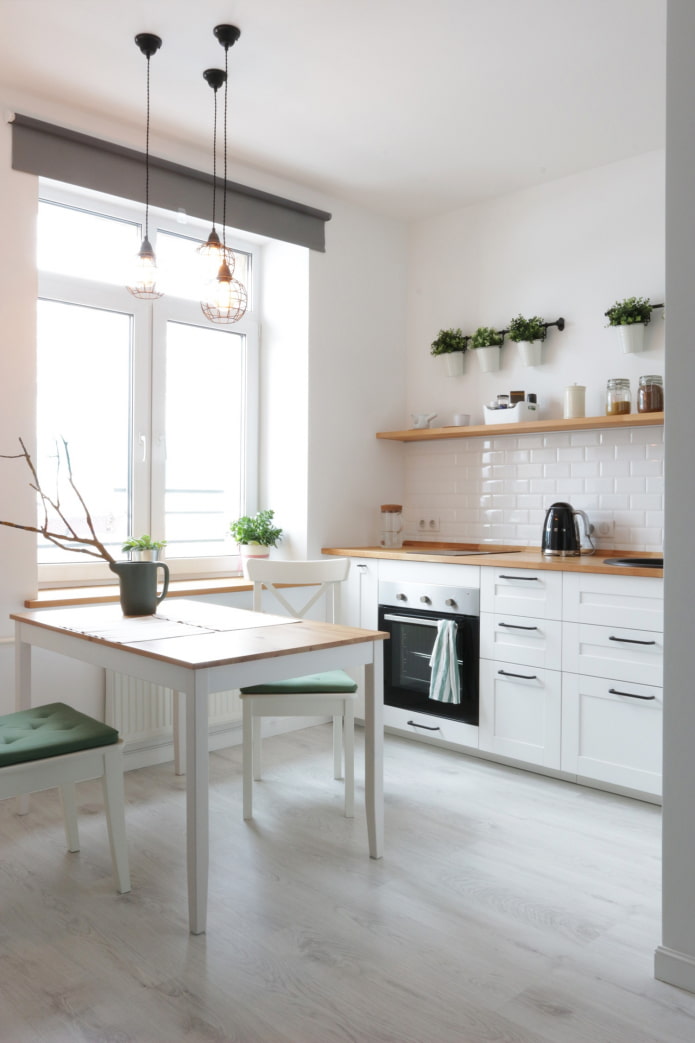

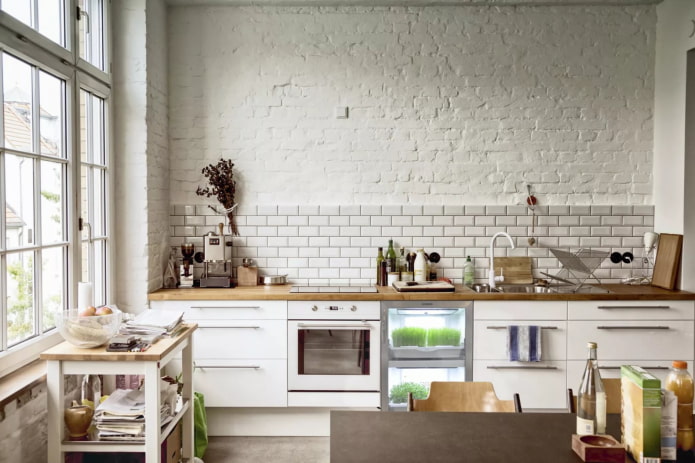
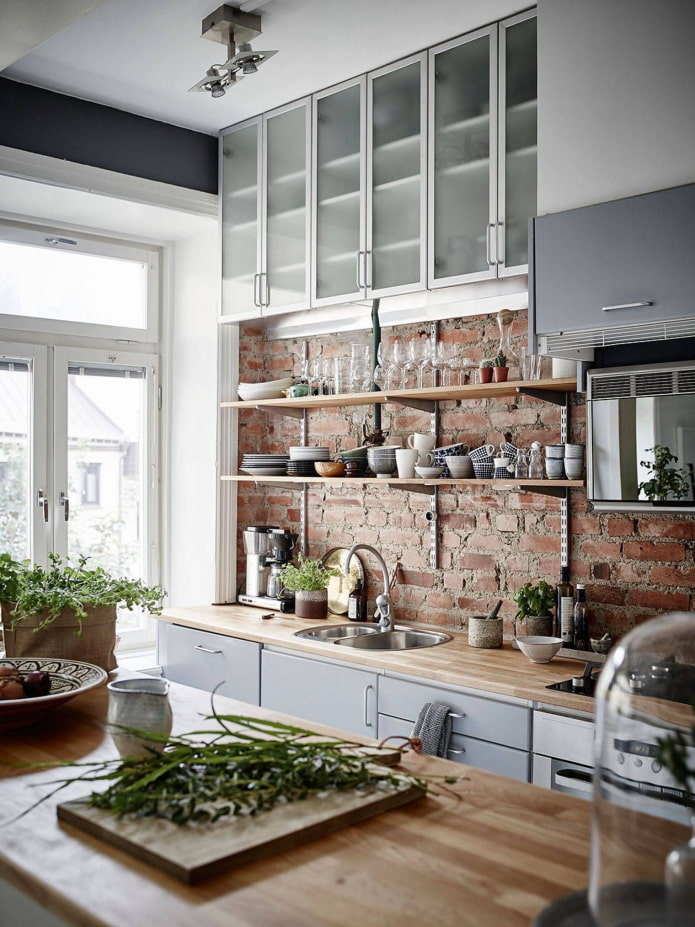
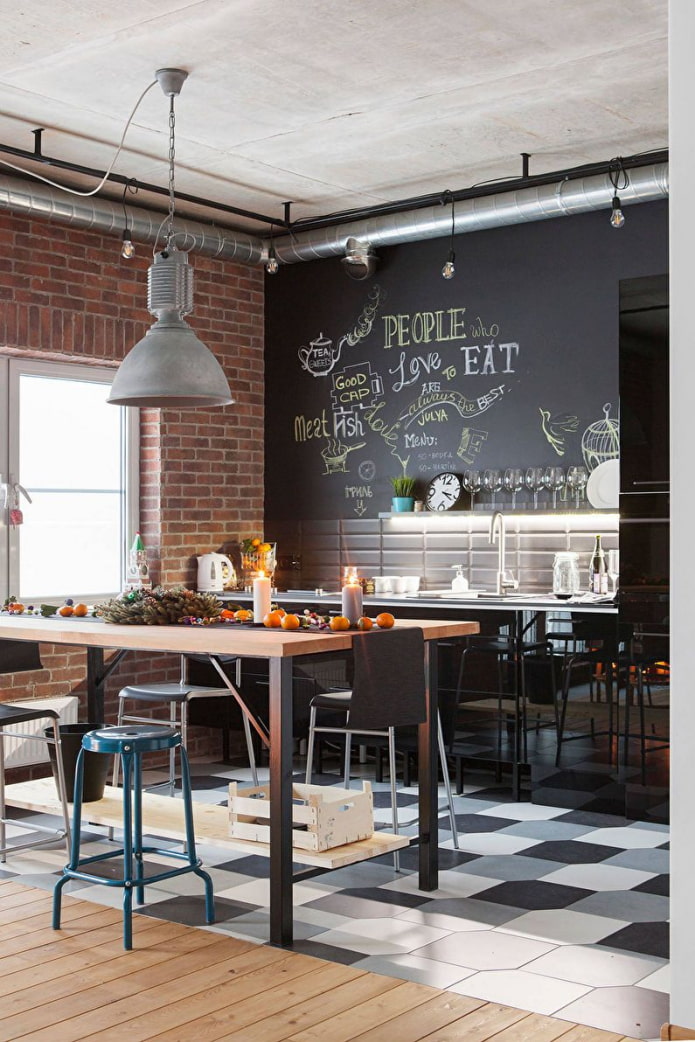
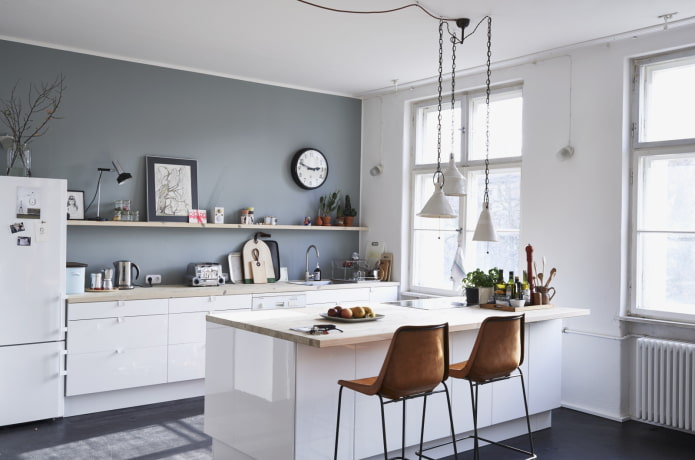



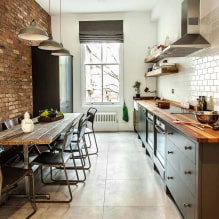
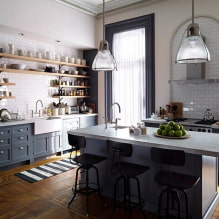

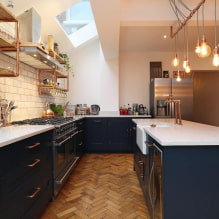

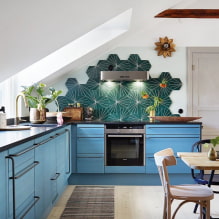

 How to choose the color of your kitchen sink?
How to choose the color of your kitchen sink? White kitchen set: features of choice, combination, 70 photos in the interior
White kitchen set: features of choice, combination, 70 photos in the interior Black set in the interior in the kitchen: design, choice of wallpaper, 90 photos
Black set in the interior in the kitchen: design, choice of wallpaper, 90 photos How to choose curtains for the kitchen and not regret it? - we understand all the nuances
How to choose curtains for the kitchen and not regret it? - we understand all the nuances Design of a white kitchen with a black countertop: 80 best ideas, photos in the interior
Design of a white kitchen with a black countertop: 80 best ideas, photos in the interior Kitchen design with green wallpaper: 55 modern photos in the interior
Kitchen design with green wallpaper: 55 modern photos in the interior